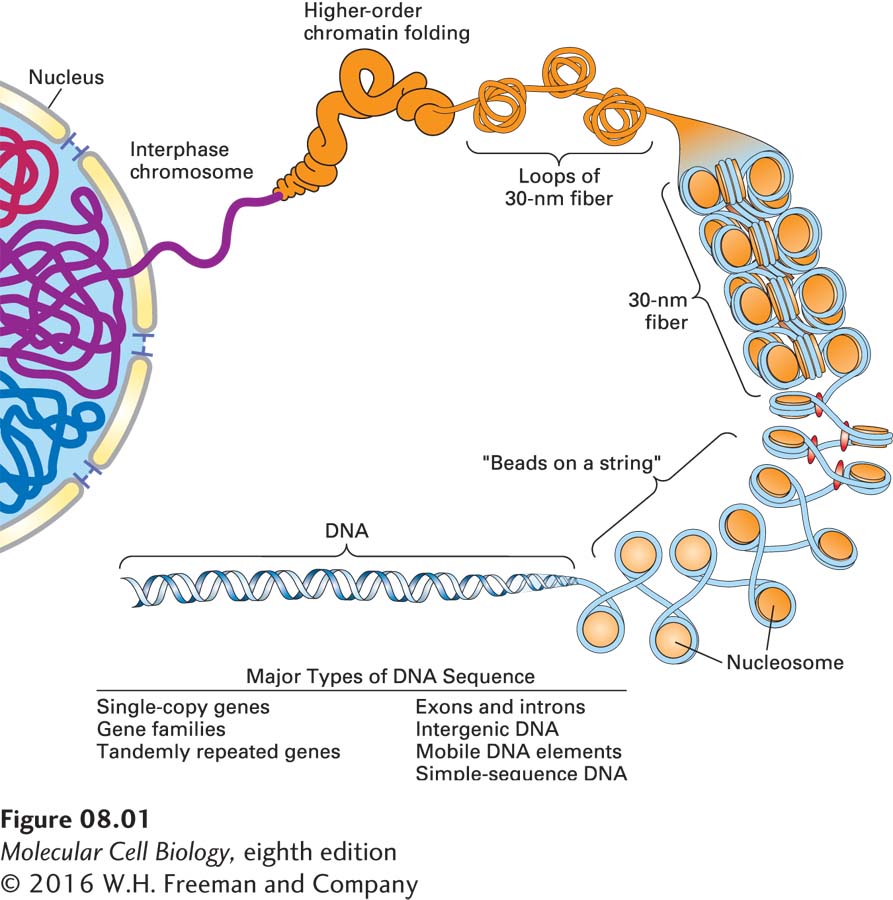
FIGURE 8- 1 Overview of the structure of genes and chromosomes. DNA of higher eukaryotes consists of both unique and repeated sequences. Only about 1.5 percent of human DNA encodes proteins and functional RNAs. The remainder includes regulatory sequences that control gene expression, which are scattered through intergenic DNA between genes and in introns within genes. Much of this intergenic DNA, about 45 percent in humans, is derived from mobile DNA elements, genetic symbionts that have contributed to the evolution of contemporary genomes. Each chromosome consists of a single long molecule of DNA (as long as 280 Mb in humans), organized into increasing levels of condensation by the histone and nonhistone proteins with which it is intricately complexed. Each chromosome occupies its own “territory” in the nucleus.
[Leave] [Close]